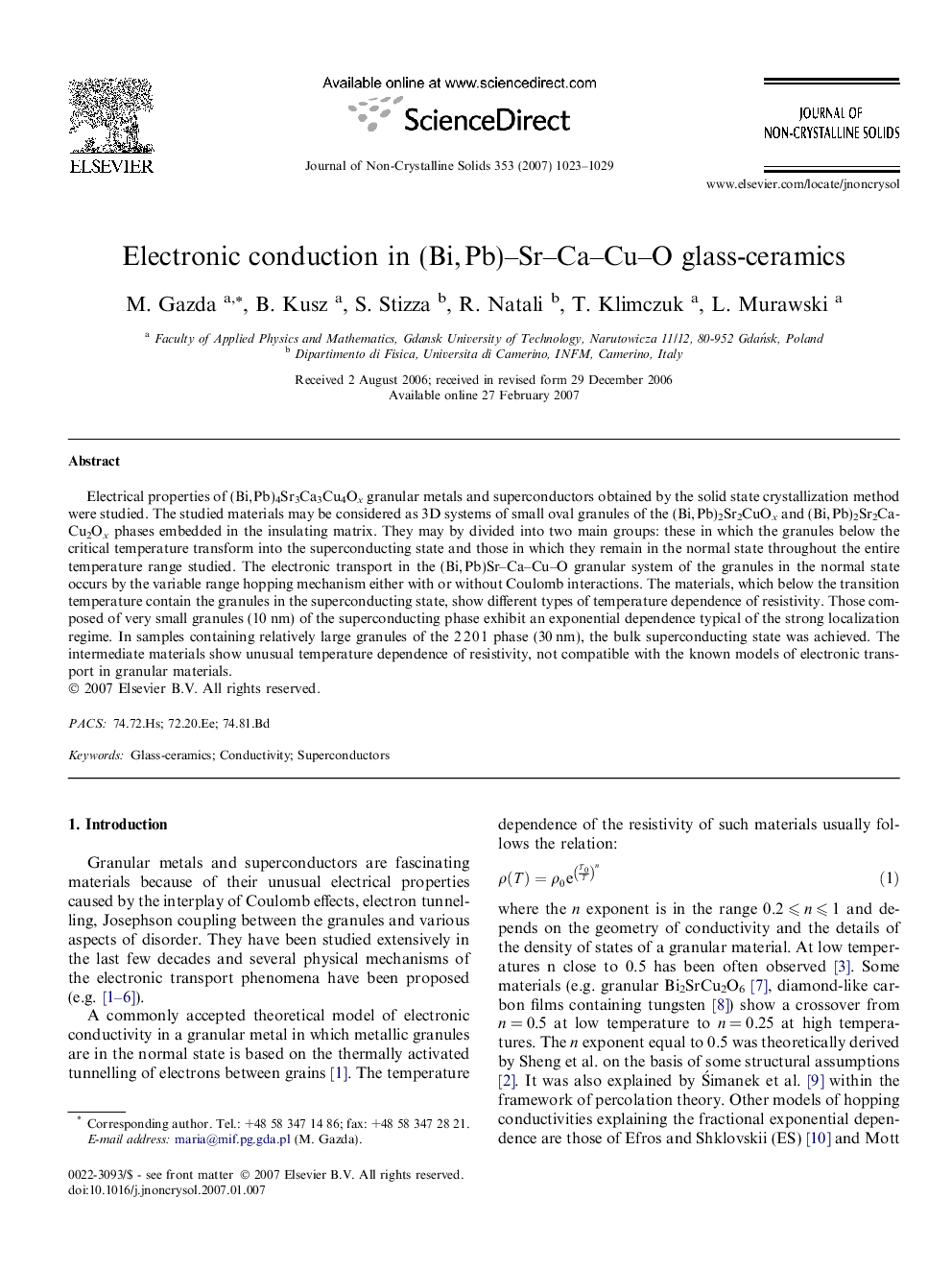| Article ID | Journal | Published Year | Pages | File Type |
|---|---|---|---|---|
| 1485307 | Journal of Non-Crystalline Solids | 2007 | 7 Pages |
Abstract
Electrical properties of (Bi, Pb)4Sr3Ca3Cu4Ox granular metals and superconductors obtained by the solid state crystallization method were studied. The studied materials may be considered as 3D systems of small oval granules of the (Bi, Pb)2Sr2CuOx and (Bi, Pb)2Sr2CaCu2Ox phases embedded in the insulating matrix. They may by divided into two main groups: these in which the granules below the critical temperature transform into the superconducting state and those in which they remain in the normal state throughout the entire temperature range studied. The electronic transport in the (Bi, Pb)Sr-Ca-Cu-O granular system of the granules in the normal state occurs by the variable range hopping mechanism either with or without Coulomb interactions. The materials, which below the transition temperature contain the granules in the superconducting state, show different types of temperature dependence of resistivity. Those composed of very small granules (10 nm) of the superconducting phase exhibit an exponential dependence typical of the strong localization regime. In samples containing relatively large granules of the 2 2 0 1 phase (30 nm), the bulk superconducting state was achieved. The intermediate materials show unusual temperature dependence of resistivity, not compatible with the known models of electronic transport in granular materials.
Related Topics
Physical Sciences and Engineering
Materials Science
Ceramics and Composites
Authors
M. Gazda, B. Kusz, S. Stizza, R. Natali, T. Klimczuk, L. Murawski,
